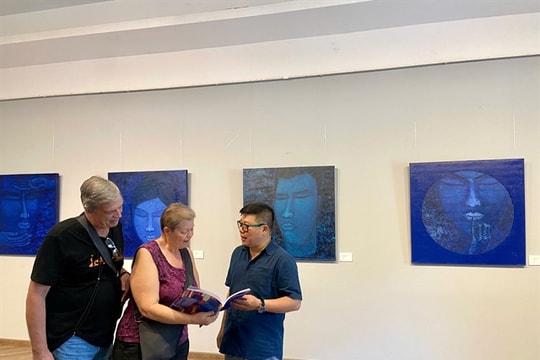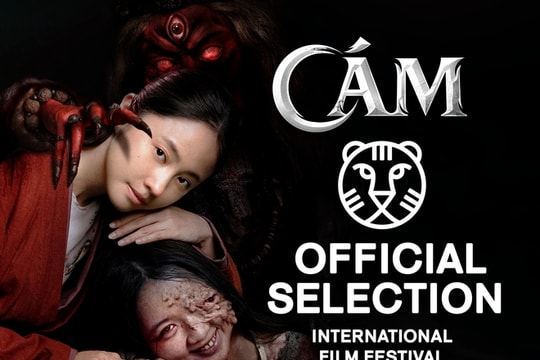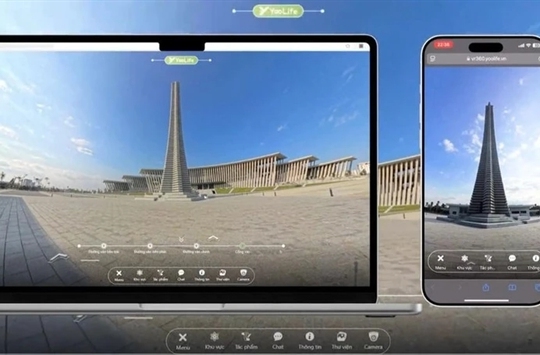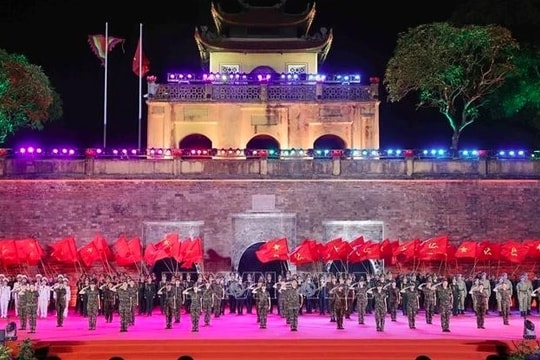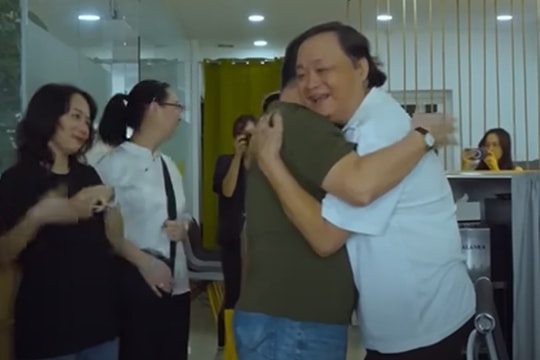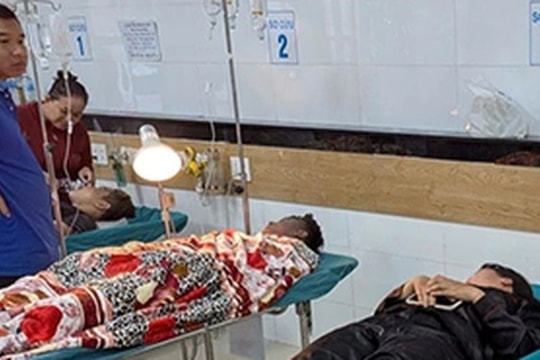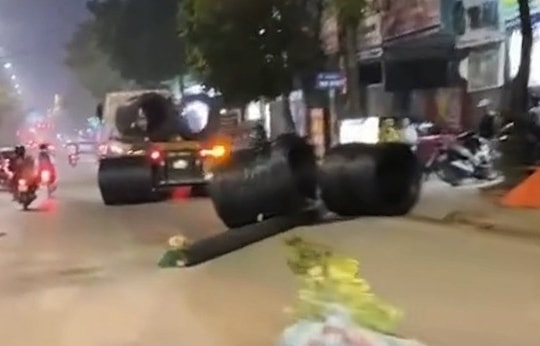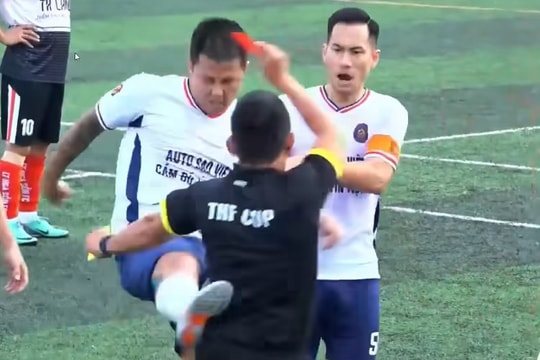Japanese visit to ancestors during Vu Lan Festival in Hội An
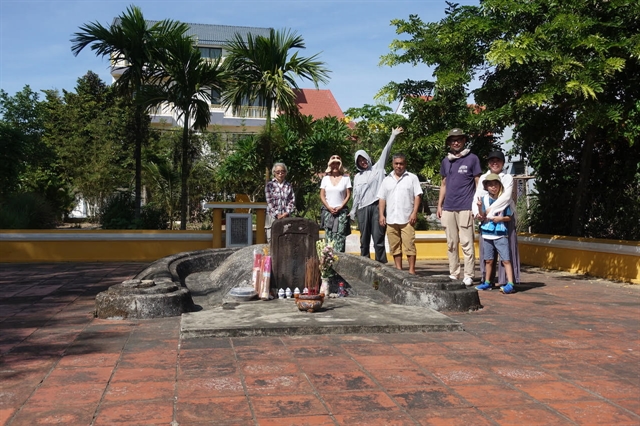 |
| A Japanese expat community in Hội An City visit to old tomb of a former Japanese in the town. The tomb has been preserved since the 17th century. Japan are preparing to celebrate Obon – a festival devoted to celebrating ancestors that features lighting lanterns and maintaining family gravesites this season. Photo courtesy of Kana Miyagawa Furuya |
HỘI AN – A Japanese expat community in the ancient town paid visits to old tombs of former Japanese traders, who had lived in Hội An in the 17th century, to welcome their ancestors back home.
Tomo Usuda, a Japanese expat living in Hội An said people in Japan are preparing to celebrate Obon – a festival devoted to celebrating ancestors that features lighting lanterns and maintaining family gravesites.
In Japan, families look after their ancestors' gravesite by sweeping them or cleaning the stones to honour them.
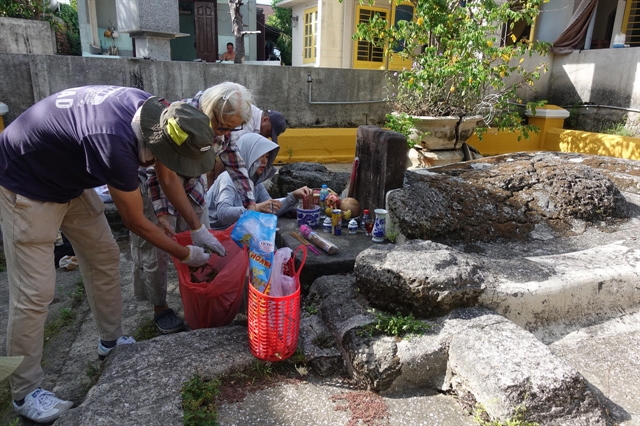 |
| Japanese expats prepare offerings to a tomb of a Japanese trader from 17th century. Many Japanese businessmen had lived in the town as the second home. They then died and buried in the town. Photo courtesy of Kana Miyagawa Furuya |
Obon is one of many Asian festivals focused on the veneration and celebration of ancestors.
Tomo said he and his mother Reiko Usuda and other members of the Japanese group including Genta Miyagawa, Taisei, Kana M. Furuya, Nao Hội An, Izumi Sasaki had paid visits to three tombs of Yajirobei, Banjiro and Gusokukun in a suburban area of Hội An.
The three tombs have been preserved and cared by generations of local people in the ancient town for years.
“We pay our tributes on Vu Lan, or (Ullambana), Festival, or Obon season in Japan, by cleaning tombs, receiving back and remembering our ancestors. Some people return to their hometown for this occasion,” Tomo said.
Tomo said he and his mother also visited his grandma's tomb – Tani Toshiko – who died at the age of 93 and was then buried in Hội An.
He also said he and Reiko also visited the memorial of La Hối – a Hội An-born composer -- and others, who were killed by the Japanese military in 1945.
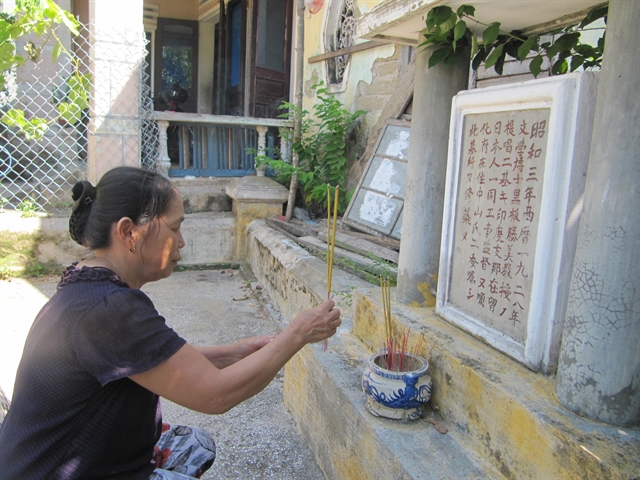 |
| A woman in Cẩm Châu commune visits a Japanese tomb next to her house. Local people still preserve and cared for the three oldest tombs of Japanese traders from 17th century. VNS Photo Công Thành |
In Việt Nam, Vu Lan (Ullambana) Festival, also known as the Amnesty of Unquiet Spirits, is held during the seventh lunar month as this is also considered to be the month lost souls are in the search of mercy.
It has become one of the largest annual traditional festivals in Việt Nam that is celebrated throughout the country.
The festival is meant for Vietnamese people to express their gratitude and appreciation to their ancestors and parents.
This year, the event falls on August 22, the 15th of the seventh lunar month.
Like Vietnamese people, the Japanese community in Hội An also came to clean tombs and burn incense, as well as offering fruit, flower and lit candles or other gifts.
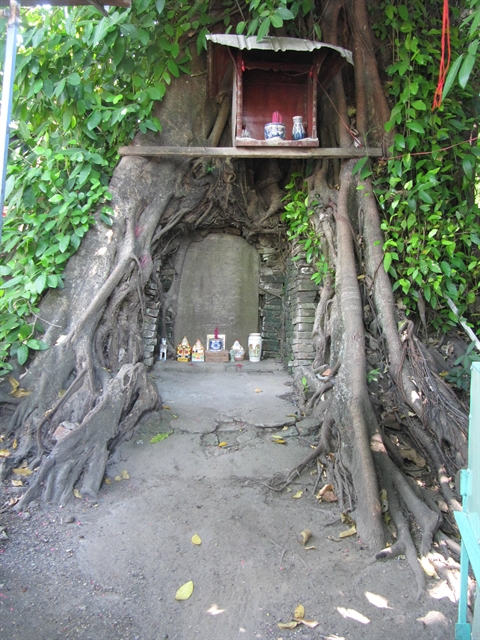 |
| A stone stele with old Japanese characters is still preserved at a park in Phan Chu Trinh street in Hội An. It has yet discovered the meaning and spiritual set up of the stele. VNS Photo Công Thành |
Their tombs, which have been preserved by local people in Cam Chau Commune, attract Japanese residents and tourists.
According Researcher Võ Hồng Việt from Hội An city’s heritage management and preservation centre, Japanese businessmen stayed in Hội An as their second home over 400 years ago when the port town was well-known as a busy trading centre.
He said there were 40 Japanese tombs in Hội An, but the three in Cẩm Châu Commune were the largest and easiest to access.
Việt said the centre, with support from the Japan International Co-operation Agency, renovated the three tombs and cleared access paths for visitors and local people.
Japanese Professor Kikuchi Seiichi from the Showa Women's University said the descendants of the defunct Japanese businesses could not be found in Japan.
Among the three tombs, Tani Yajirobei is believed to have died in 1647 and his records include the oldest and clearest information related to his life, including a love affair with a local woman.
It's evidence of the prolonged existence of the Japanese community in Hội An, with ancient architecture, a bridge and culture that have been preserved for over a century.
Việt said Tani Yajirobei had been called back to Japan following a ban issued by the Emperor on oversea businesses. However, he returned to Hội An in an effort to find the woman he fell in love with. While he was there, he fell sick and died.
He was buried in a green paddy field with his tomb facing northeast towards his homeland in Japan, according to Việt.
The other tombs were inscribed with the names Banjiro (1665) and Gusokukun (1629).
According to data from the centre, the last ship left Hội An in 1673 to repatriate the Japanese traders, but some of them stayed and died in the town. VNS




